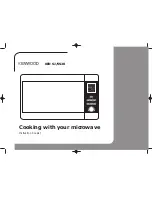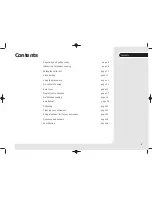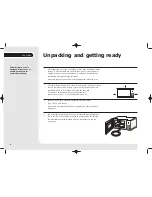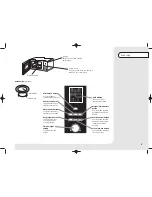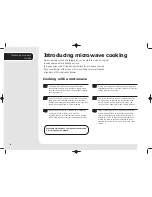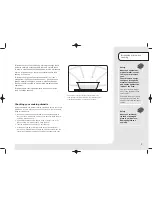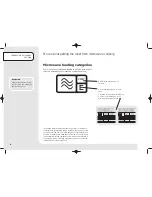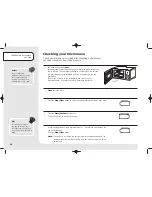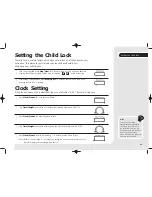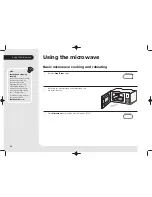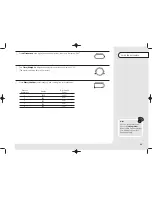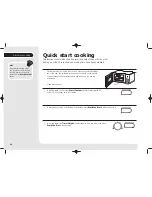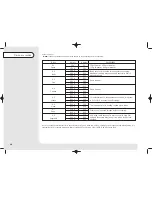
Important Safety Instructions
2
First aid
Treat scalding by:
1 Quickly placing the scald
under cold running water
for at least 10 minutes.
2 Cover with a clean dry
dressing. Do not use
creams, oils or lotions.
Fire
In the event of fire:
1 Keep the oven door
closed.
2 Turn off the power.
3 Unplug from mains.
Safety
Please Read Carefully and
Keep for Future Reference
Maintenance of your Microwave
It is hazardous for anyone other
than a competent person to carry
out any service or repair operation
which involves the removal of a
cover which gives protection against
exposure to microwave energy.
l
If the door or door seals are damaged,
the oven must not be operated until it has
been repaired by a competent person.
l
If smoke is observed, switch off or unplug
the appliance and keep the door closed in
order to contain any flames.
l
If the supply cord is damaged, it must be
replaced by a service agent or similar
qualified person.
l
If you wear a pacemaker, please contact
your doctor before using a microwave
oven.
Microwave use
l
This microwave is designed for food
preparation only and is not intended for
commercial use.
l
It should never be used for drying cloths
or other non-food purposes.
l
The microwave should not be left
unattended when in use.
l
Only use utensils that are suitable for
microwave use.
l
Care should be taken so metal objects are
not left in the microwave
l
Care should be taken when using paper,
plastic, wooden or other combustible
materials in the oven as they can catch
fire
l
Oil & fat for deep frying should not
heated in the microwave
l
Only use cling film designed for
microwave use & take extra care when
removing the film to avoid steam burns
l
Only heat popcorn that has been
designed for microwave use.
Cooking use
As the power of different microwave ovens
can vary considerably, care must be taken
when first using this appliance as it may
cook faster than your old unit.
l
Do not leave the appliance unattended
during use.
l
Do not allow children to use the oven
without supervision
Containers
l
Pressure will build up in sealed containers
and can cause them to explode. Therefore
do not use the following in your
microwave:
• Sealed containers
• Capped bottles
• Vacuum containers
• Sealed jars
• Hard-boiled egg
• Nuts
l
Always pierce the skin of fruit and
vegetables, such as potatoes.
Delayed boiling
Liquids heated in a microwave can boil up
when removing them from the microwave.
Take the following precautions :
l
Always stir liquids, before & after
cooking
l
Allow them to stand
l
Use containers that are wider at the top
than the bottom
Preparing Food for babies
Extra care must be taken when preparing
food or drink for babies and small children.
l
Always test the food or liquid
temperature before giving it to
baby.
l
When using a baby bottle, ensure the teat
is removed before heating.
l
When warming milk, ensure the bottle is
shaken.
l
Take care when cooking food with a high
sugar or fat content, such as Christmas
pudding or fruitcake. The sugar or fat can
overheat and in some cases catch fire.
Cleaning
The oven should be cleaned regularly and
food deposits removed. Failure to maintain
the oven in a clean condition can affect the
life of the appliance and possibly result in a
hazardous situation.
(See cleaning your microwave )
• Eggs in their shells
l
The temperature of accessible surfaces
may be high when the appliance is
operating.
NOTE: refer to the section in this book on
the correct utensils to use in this appliance.
These include :
¨ Metal cooking utensils
¨ Metal plates or trays
¨ Wire twist ties
¨ Crockery with metal trims
¨ Meat thermometer

